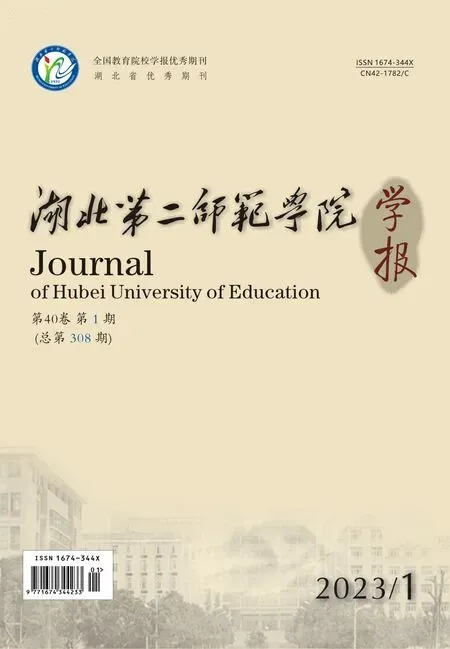机器英译非遗外宣文本问题探析
——以二十四节气为例
李国兵,张 敬
(中南林业科技大学 外国语学院,长沙 410004)
一、引言
非物质文化遗产是中华民族历史文化成就和劳动智慧的结晶。非遗外宣已然成为一个国家、一个民族展现形象、提高文化软实力的重要窗口。其中, “二十四节气” 于2016年入选联合国教科文组织人类非物质文化遗产名录,被国际气象界誉为 “中国第五大发明”[1],可见其国际影响力之大和外宣空间之广阔。然而,笔者以 “节气翻译” 和 “节气英译” 为主题词,在中国知网仅检索到21篇相关文献,逐一阅读文题和摘要,发现前人关于 “二十四节气” 英译的研究均集中于节气名称术语的英译策略[2],鲜少涉及文本翻译范畴;其次,已有学者指出非遗外宣文本存在过度利用机器翻译的现象[3],而深入探究、归纳机翻译文问题的文献尚未见出版。因此,本文以China Daily双语新闻关于中国传统非物质文化遗产——二十四节气的外宣介绍材料为例,探析机器翻译外宣文本在词法和句法两个层面存在的问题,以期为非遗译者提供借鉴、促进非遗文化 “走出去” “走进去” 。
二、非遗外宣文本的特点及机器翻译简介
(一)非遗外宣文本的特点
非遗外宣文本具有传达信息和呼唤感召的功能,其富有民族和地方特色的表达主要体现在中华文化负载词和习俗语的广泛运用,例如:谷雨、咬春、芝麻开花节节高、未过惊蛰先打雷,四十九天云不开等,这是非遗外宣英译的一大难点;其次,汉语流水句、连动句、主语省略句普遍存在于非遗外宣文本中,英译时需保证逻辑通畅、考虑译入语读者的认知特点,此为难点之二。
(二)机器翻译简介
机器翻译是指利用计算机处理自然语言(包括分析、转化和产出),达到语际交流的过程。[4]这一概念由布斯(A.D.Booth)和韦弗(W.Weaver)于1947 年提出。此后,机器翻译的发展几经沉浮,从最初的基于语法规则的机器翻译(Rule-Based MT)纵深发展到基于范式(Example-Based)和语料库数据统计(Statistics-Based)的机器翻译。[5]到2016年,Google推出基于神经网络和深度学习的谷歌翻译(Google Translate),大幅提高翻译质量,在程式化较高的政治、经济和科技等文本中的运用已取得了一定成效,但在翻译文化厚重的文本和文学作品时的表现仍有待提高。
三、研究语料采集与分析
本研究语料来源于中国日报双语新闻(微信公众号) “双语说节气” 栏目,由于立冬节气的相关介绍推文缺失,共收集23个节气的中英双语对照文本;将中文介绍文本逐段导入到Google翻译,得到机器译文;汇总形成中文原文、中国日报双语新闻官方译文(以下简称:原译)与Google 机器译文(以下简称:机译)句级对齐的语料。然后逐句校对、分析、标注机器翻译在词法和句法层面存在的问题。中国日报双语新闻是中国最权威的网络媒体之一,也是外国读者了解中国文化习俗、经济社会的重要平台,其译文质量较高;同时,Google翻译是国内外测评良好的翻译工具,受到翻译从业者和学者的青睐,因此研究的信度和效度得以保证。
四、机译 “二十四节气” 外宣文本问题分析
本文考察标注后的文本,归纳词法与句法层面出现频次较高的问题,结合案例分析逐一阐述:
(一)词法层面
词法层面的机翻译文存在的显著问题包括文化负载词误译、漏译与赘译、词性错误、用词不当、单复数错误等五项。
1.文化负载词误译
中华文化负载词是我国传统文化的集中体现,深深打上地域特色和时代的烙印。[6]“二十四节气” 外宣文本中的文化负载词包括节气名称、传统食品、朝代、民俗活动、地域位置以及历史人物等。
例1:江南地区的人们经常在清明节食用这种由糯米制成的绿色团子。
原译:People in the Jiangnan(south of the Yangtze River)region often eat this kind of green colored balls made from glutinous rice on Tomb Sweeping Day.
机译:People in Jiangnan area often eat this green dumpling made of glutinous rice on Qingming Festival.
江南地区指我国长江以南的地区,仅音译成Jiangnan area 让不太了解中国地理的读者不知所云,可采用 “音译加注” 的方法译为the Jiangnan(south of the Yangtze River)region,既保留中国特色,又照顾外国读者的认知需求。
例2:小满是吃苦菜的时节。
原译:Grain Buds is a season for eating the herb of the common sow thistle.
机译:Xiaoman is the time to eat bitter vegetables.
苦菜是中国最早的可食用野菜之一,也是一种中药材,药名败酱草。原译翻译苦菜时增加了the herb,体现其药用功能,让外国受众立马就能了解到人们食用苦菜的原因;而机器直译成bitter vegetables,只让人觉得这是一种口感苦涩的蔬菜,未能等价传达原文内涵。
例3:这一习俗可以追溯到春秋战国时期。
原译:This custom can be traced back to the Spring and Autumn Period (770-476BC) and Warring States Period(475-221BC).
机译:This custom can be traced back to the Spring and Autumn Period and Warring States Period.
原文本中多次出现历史时期和朝代,这些时期、朝代与现今已相去甚远,仅译出其名称受众无法产生直观感受,因此译者翻译这类时间概念的文化负载词时,应增加国际通行的公元纪年时间。
例4:司秤人一面打秤花,一面说吉祥话。
原译:While the person calculating the weight would offer good wishes and auspicious words.
机译:While weighing flowers,the people of the scale said auspicious words at the same time.
秤花是指老式秤秤杆上的刻度,打秤花即移动秤砣来确定所称物体的重量,一般从小数打到大数。机器翻译将打秤花直译weighing flowers,让读者如堕五里云雾中,摸不着头脑;而原译在理解文化语境的基础上意译为calculating the weight,传达出了该词的语意内涵。
例5:据传,在2500年前的吴国宴席上,吴王厌倦了山珍海味,想换个口味。
原译:Local legend has it that on the midwinter feast 2,500 years ago, the King of Wu (one of the states during the Western Zhou Dynasty and the Spring and Autumn Period)was tired of all kinds of costly foods and wanted to eat something different.
机译:According to legend,at the Wu State Banquet 2500 years ago,King Wu was tired of the delicacies of the mountains and the sea,and wanted to change his taste.
原译对吴国做了充分的注释,让受众了解吴国所处的时代,展现出广大学者提倡的 “丰厚翻译” (thick translation)的理念[7]。译者翻译历史人物、国别时,可采用 “音译加注” 的方法构建一个丰富的语言和文化环境,更好的推动信息交流。
2.漏译与赘译
漏译与赘译常见于机器译文中,漏译指遗漏了该译的信息,导致译文歧义;赘译是过度翻译,译出多余、无用的信息。
例6:其配料矮脚黄、香肠和盐水鸭均为南京特产。
原译:Some of the ingredients like aijiaohuang (a kind of green vegetable), sausage and salted duck are the specialties in Nanjing.
机译:Its ingredients,sausages and salted duck are all specialty products of Nanjing.
机翻译文漏译like aijiaohuang(a kind of green vegetable),使得Its ingredients 与sausages and salted duck 处于平行关系,与原文的包含关系相悖,造成译文歧义。译者在翻译或审校机翻译文时,可采用like,including等词处理包含关系。
例7:随之变为蒙蒙烟雨或潮湿的雾气。
原译:And then it turns into misty rain or fog.
机译:And then it turns into misty rain or humid fog.
雾气形成的基本条件之一是近地面空气中水蒸气含量丰富,所以雾气一定是潮湿的,Google翻译将 “潮湿的雾气” 译为humid fog,无异于画蛇添足。
例8:和小暑节气一样,大暑期间也时常发生洪水、干旱和台风等自然灾害。
原译:Like Minor Heat, many natural calamities such as floods, droughts and typhoons also happen during Ma⁃jor Heat.
机译:Like the Xiaoshu solar terms, natural disasters such as floods, droughts, and typhoons often occur during the summer months.
范畴词用来表达行为、现象、属性等概念所属的范畴,是汉语常用的特指手段[8],没有实质的意义,因此在汉英翻译时常省略。例8中 “小暑” 本身就是节气,英译为Minor Heat即可,机译添加solar terms乃多此一举。
3.词性不当
词性不当主要体现在机器翻译倾向于字面对应,未能实现动词、名词和形容词三者之间的灵活转化,导致部分译文出错或生硬难读。
例9:天气越来越热,湿热会影响人们的身体健康。
原译:When the weather grows hotter,dampness and heat can affect human health.
机译:The weather is getting hotter and hotter and humid will affect people’s health.
例10:在过去,由于交通不便,南京售卖的蔬菜量少且贵。
原译:In the past,due to inconvenient transportation,vegetables sold in Nanjing were few and expensive.
机译:In the past, due to inconvenient transportation, the amount of vegetables sold in Nanjing was small and expensive.
例9中 “湿热” 的词性应为名词,作主语成分,而Google 翻译成humid,出现词性错误;例10中 “量少” 是一个形容词,不可拆分,机器翻译切分错误,将 “量” 和 “少” 单独译成the amount和small,使得其后的expensive与主语不对应。此外,原文中的 “降雪量增大” 也可译为the snow becomes heavy,转译动词 “增大” 为形容词heavy,相较于the amount of snowfall increases,更符合译入语的表达习惯。
4.用词欠妥
机器翻译用词欠妥的原因在于Google无法理解词汇的具体文化语境含义、区分表达上的细微区别。
例11:老百姓给这种冬至喝的汤起了一个奇怪的名字—— “头脑” ,并把它们分给左邻右舍。
原译:They give the midwinter soup a strange name: “brain” ,and share it with their neighbors.
机译:The common people gave this winter solstice soup a strange name- “mind” , and distributed them to their neighbors.
“分给” Google译为distributed,查阅《牛津高阶英汉双解词典》可知,distribute一般释义为 “分发、分配某事物” ,与原文意思有一定出入,此处宜译为share,做 “分享” 之意,保留原文营造的邻里热闹和谐的气氛。
例12:随着霜降的来临,整个世界都充满了晚秋的气息。
原译:As Frost’s Descent comes,the world is filled with the atmosphere of late autumn.
机译:With the advent of frost,the whole world is filled with the breath of late autumn.
原文中 “气息” 一词应理解成 “气氛、氛围” ,而不是人呼吸的气息,Google无法区分其间的细微差异,误译成breath。
5.单复数错译
单复数错译分为两类,一是动词在人称和数的变化错误,二是名词的单复数错误。
例13:温度上升,降雨增多。
原译:Temperatures begin to rise and rainfall increases.
机译:Temperature rise and rainfall increase.
例14:青梅含有多种天然高品质的有机酸,还富含矿物质。但是新鲜的梅子很酸……
原译:Green plums contain a variety of natural and high-quality organic acids and are rich in minerals.However,fresh plums are acerbic...
机译:Green plum contains a variety of natural high-quality organic acids and is also rich in minerals.But fresh plums are very sour...
例13中且不论Temperature和rainfall的单复数形式是否错误,机器译文采用rise和increase的原形就存在问题;例14 “青梅” 与 “新鲜的梅子” 为同一事物,而机器译文却 “差异对待” ,错译 “青梅” 为Green plum。因此,译者如借助机器辅助翻译,应仔细检查校对,确保前后文的一致性与连贯性。
(二)句法层面
句法层面的主要问题包括习俗语误译、时态错译、语序不当、照应不足和逻辑错译等。
1.习俗语误译
汉语习俗语表达生动具体、通俗易懂,有些形式工整,读来朗朗上口。然而,汉语习俗语的英译却是译者需要攻克的难题,机器翻译更是时常出错。
例15:俗话说: “七八月,看巧云。”
原译:There is a saying that goes, “Enjoying the clouds of various forms in July and August(lunar month).”
机译:As the saying goes: “July and August,look at Qiaoyun.”
习俗语一般采用 “意译” 的方法翻译,如果Google翻译的支撑语料库没有收录相关表达,那么输出的译文与原文意思就会相距千里。该例的机译文本逐字翻译, “巧云” 音译成Qiaoyun;相比之下,原译不仅传达了俗语的文化语意,还增添了lunar month,便于没有农历概念的西方读者确定时间、了解中国文化。
例16:俗话说: “立秋雨淋淋,遍地是黄金。”
原译:There is a saying that goes: “If it rains on the day of the Start of Autumn,a good harvest is expected.”
机译:As the saying goes: “It’s raining in the beginning of autumn,and there is gold everywhere.”
“遍地黄金” 指的是秋季粮食作物丰产的情景,Google 译文为there is gold everywhere,将 “黄金” 直译成gold,哪知此黄金非彼黄金;其次,分析原文可知,俗语前句是后句成立的条件,应译为条件句。可见,机译习俗语出错概率高,译后审校须仔细检查,逐一修改。
2.时态错译
机器译本时态错译主要体现在一般现在时与一般过去时的混用。
例17:(据传,在2500年前的吴国宴席上……)吴王大块朵颐,很是喜欢这种美食。
原译:He ate a lot and liked the food very much.
机译:King Wu eats a lot and likes this kind of delicacy very much.
根据 “2500年前” 可知时态是一般过去时,而机器翻译将动词译为eats和likes,导致时态错误。
例18:惊蛰期间,中国的大部分地区经历着最快速的升温。
原译:During this period,most parts of China experience the quickest rise in temperatures.
机译:During the startling period,most areas in China experienced the fastest heating.
原文是在陈述惊蛰时期发生的自然现象,描述客观事实,时态宜采用一般现在时。从experienced一词可判断机译文本错译成一般过去时。针对该类错误,译者在译后审校和编辑时,需认真检查核对,特别是讲述历史故事和描述自然现象的语句。
3.语序不当
机器翻译一般不调整语序,有时汉语语序与英语表达习惯不一致时,就会导致语序不当。
例19:根据当地气候条件,自明清时起,浙江绍兴会在夏至当天举行划龙舟比赛,而非在端午节。
原译:Due to the local climate,dragon boat races have been held on the Summer Solstice day in Shaoxing,Zheji⁃ang province rather than on Dragon Boat Festival since the Ming(1368-1644)and Qing(1644-1911)dynasties.
机译:According to local climatic conditions,starting from the Ming and Qing Dynasties,Shaoxing,Zhejiang will hold a dragon boat race on the summer solstice day instead of on the Dragon Boat Festival.
机译将介词短语according to 和现在分词结构starting from 均至于句首,多达13个词汇,不符合英文形合的特点,可调整原文第二个介词结构的语序,至于句末,以求句式协调。
例20:即使看了许多医生也不见效。
原译:...and couldn’t recover even after seeing many doctors.
机译:...even after seeing many doctors,it didn’t work.
汉语是先事实后评论,而英语是先评论后事实,所以需先翻译 “不见效” 。机器译文按照原文语序翻译,没有考虑到汉英差异,导致译文语序不合理。
4.照应不足
Halliday&Hasan(1976)提出英语语篇衔接理论,将语篇衔接手段六大类,其中照应手段指的是语篇中一个成分作为另一个成分的参照点[9]。Google译文不善利用照应手段替代词汇重复,导致句子冗余。
例21:人们会在纸上画上白虎,然后将猪血和肉涂在白虎的嘴上。
原译:People draw the white tiger on paper,and then smear pig’s blood and pork on its mouth.
机译:People would draw white tigers on paper,and then smear pig blood and meat on the white tiger’s mouth.
汉语多重复,英语多替代和省略。原文两次出现 “白虎” ,Google悉数译出,而原译照应前文,在第二次出现时用its替代,避免冗余。
例22:这些水珠附在……阳光下的水珠看起来晶莹剔透,无瑕可爱。
原译:These white water drops adhere to ..., the sunshine makes them look crystal clear, spotless white and adorable.
机译:These water droplets are attached to...,the water droplets in the sun look crystal clear,flawless and lovely.
第二次出现 “水珠” 时,原译用them 替代these white water drops,回扣前文内容,形成照应关系,避免重复。译者应充分运用照应、替代、省略等手段精炼译文、使前后文衔接紧密、逻辑通畅。
5.逻辑错译
机器翻译二十四节气外宣文本最常见的逻辑错误是因果关系译成平行关系,同时也包括其他零散的问题。
例23:秋分过后,太阳直射点向南移动,北半球白昼时间变短,夜晚时间变长。
原译:After that day,the location of direct sunlight moves to the south,making days shorter and nights longer in the northern hemisphere.
机译:After the autumnal equinox,the direct sun point moves south,the day time in the northern hemisphere be⁃comes shorter,and the night time becomes longer.
分析原文可知,前后句为因果关系。原译利用现在分词making表结果,而机译采用平行结构翻译,未体现出这层关系。
例24:白露时节,正赶上葡萄大批上市。
原译:White Dew season comes right when grapes become widely available for sale.
机译:Bailu season is catching up with the large number of grapes on the market.
原文 “正赶上” 表达的意思是葡萄大批上市的时间刚好是在白露时节,而机器译文亦步亦趋翻译原文,将白露时节这个每年农历时间不变的节气译为去迎合葡萄上市的时间,不合逻辑。而原译利用comes right when...,生动形象传达出白露与葡萄上市时间刚好重合。
五、结语
自神经网络和深度学习的机器翻译问世以来,机器翻译延伸至各个领域。本文以中国日报双语新闻(微信公众号)推送的二十四节气双语文本为例,探究Google 机器翻译外宣文本在词法与句法层面存在的问题,分别是文化负载词误译、漏译与赘译、词性不当、用词欠妥、单复数错误;习俗语误译、时态错译、语序不当、照应不足和逻辑错译。诚然,还有大小写、标点符号、语态错误等零散问题未纳入本研究中。总之,非遗译者如借助机器辅助翻译,须关注上述十大机译问题、提高译文质量、推动非遗文化走向国际、走向世界。
——以《现代大学英语·精读1》教师用书为例

